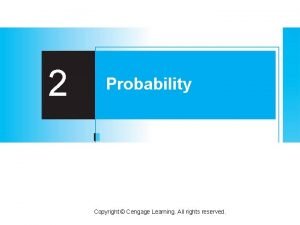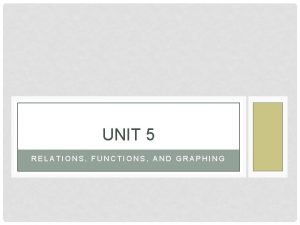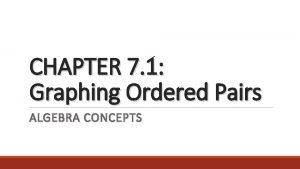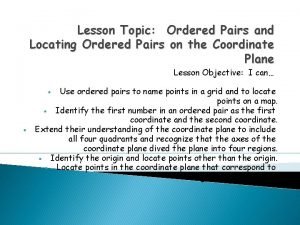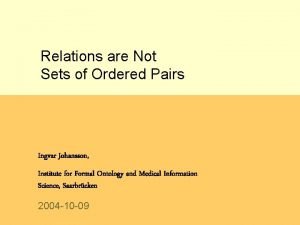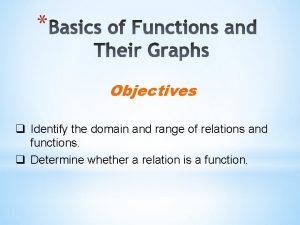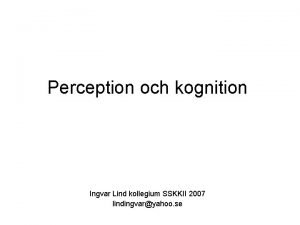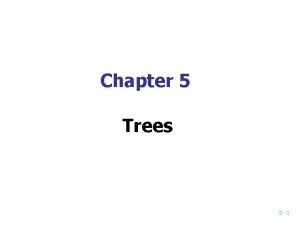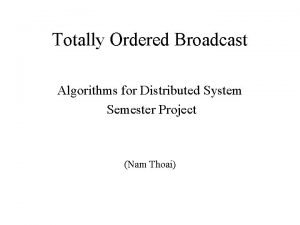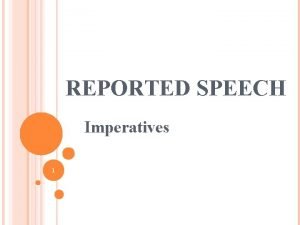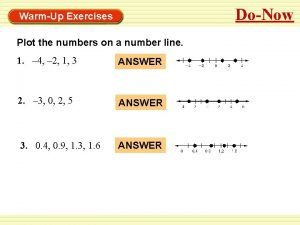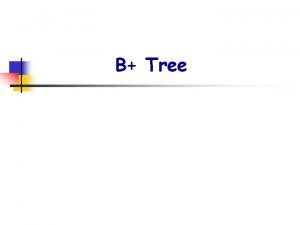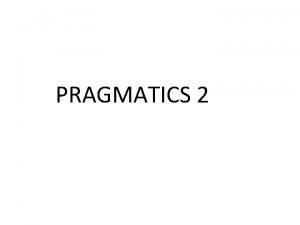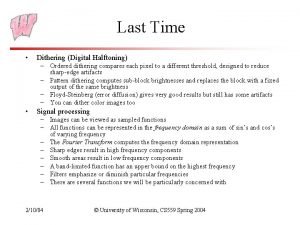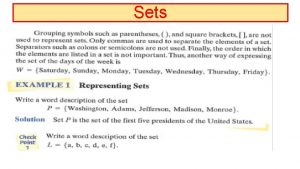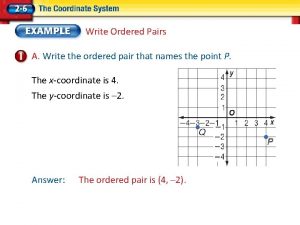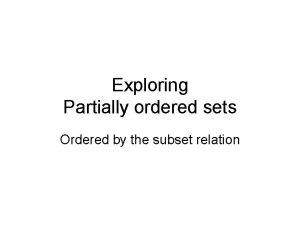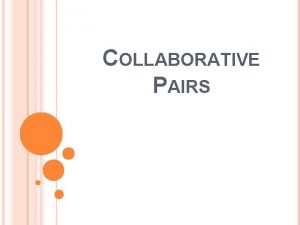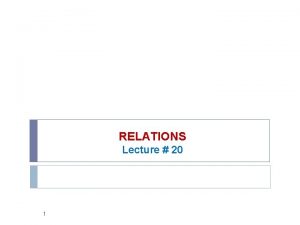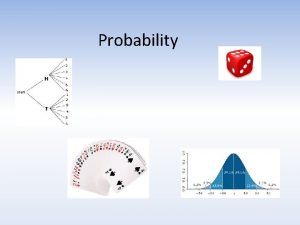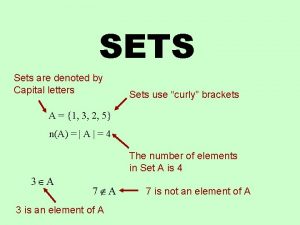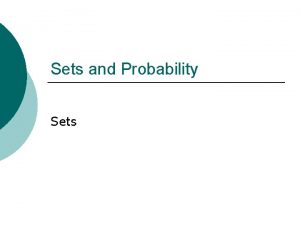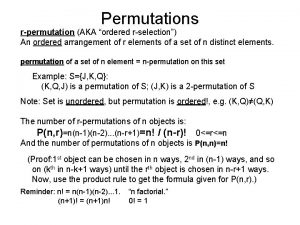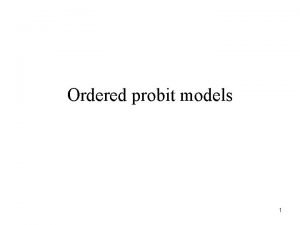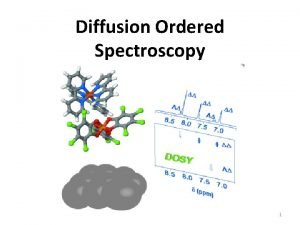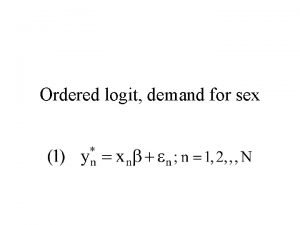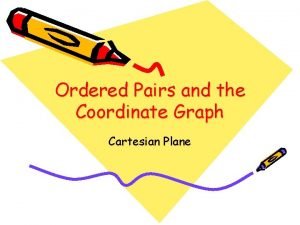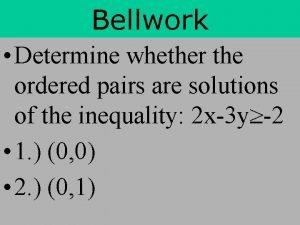Relations are Not Sets of Ordered Pairs Ingvar






























- Slides: 30

Relations are Not Sets of Ordered Pairs Ingvar Johansson, Institute for Formal Ontology and Medical Information Science, Saarbrücken 2004 -10 -09

The Importance of Relations • The question of relations is one of the most important that arise in philosophy, as most other issues turn on it: monism and pluralism; the question whether anything is wholly true except the whole of truth, or wholly real except the whole of reality; idealism and realism, in some of their forms; perhaps the very existence of philosophy as a subject distinct from science and possessing a method of its own. (Bertrand Russell, Logical Atomism, 1924. )

General Message • Features of representations must not be conflated with what is represented.

Specific Message • An internal relation can be represented by, but not be identical with an ordered pair or a set of ordered pairs.

Interesting Consequence • There are no anti-symmetrical internal relations in the language-independent world.

Identity and Representation • Circles are not identical with an equation. • Relations are not identical with sets of ordered pairs, • In both cases, it is merely a matter of representation. (x - a)2 + (y - b)2 = r 2 y b a x

Relations in Set Theory • relation, a two-or-more-place property (e. g. loves or between), or the extension of such a property. In set theory, a relation is any set of ordered pairs (or triples, etc. , but these are reducible to pairs). For simplicity, the formal exposition here uses the language of set theory, although an intensional (property -theoretic) view is later assumed. (The Cambridge Dictionary of Philosophy, 1999. )

Quotation • “Because relations are sets of ordered pairs, we can combine them using set of operations of union, intersection, and complement. These are called Boolean operations. ”

Relation Terminology • • • Relation – relations Relatum – relata Binary, ternary, …, n-ary Symbolism: Rab (=a. Rb), Rabcd, etc. Ordered pair: <a, b> Set of ordered pairs: <x, y>: such that … or <a, b>, <f, g>, . . .

Kinds of Ontological Relations • Relations of Existential dependence; relata are existentially dependent on each other, e. g. , perceived color and perceived spatial extension. • Intentional relations; can exist with only one relatum, e. g. , love. • External relations; independent of the qualities of the relata related, e. g. spatial distance. • Internal relations (comparative, grounded); dependent on the qualities of the relata related, e. g. larger than, lighter than, rounder than.

Internal Relations Between Quality Instances are Grounded in Universals T 1 : a T 2: b • The thing T 1 is larger than the thing T 2 because T 1 has an area-instance, a, that is larger than the area-instance of T 2, b. • Every area-instance that instantiates the same universal as a is larger than every area-instance that instantiates the same universal as b.

Internal Relations have Specific Features a b • Possibly, a exists but not b, or vice versa (compare existential dependence). • Necessarily: if both a and b exist, then the relation of “being larger than” is instantiated (compare external relations).

Internal Relations can be Perceived a d b c • • a is larger than b b is larger than c a and d are equally large • a is more similar to b than to c

Internal Relations require a Determinable a d b c • a is larger than b • a and d are equally large • a is more similar to b than to c • a, b, c, and d are different determinate instances of the same determinable.

Internal Relations require a Determinable • Statements describing internal relations: “a is smaller than b”, “a is heavier than b”, “a is more electrically charged than b”, “a has greater intensity than b”, etc. • These internal relations have different relata of the same kind. • Resemblance (both exact and non-exact) is always resemblance in a certain respect. • A determinate-determinable distinction (W. E. Johnson) has to be made explicit.

Exact Resemblance • When two things are equally large there is a relation of exact resemblance between the two quality instances in question. • But there is only one universal. • When two particulars are qualitatively identical there is necessarily a relation of exact resemblance between them.

Non-Exact Resemblance • When two things have different areas there is a relation of non-exact resemblance between the two area instances in question. • There are then two universals. • Between these universals there is an internal relation, a determinate kind of resemblance. • When the universals are instantiated there is also an internal relation between the corresponding instances.

Internal Relations can be Mind-Independent a d b c • We discover that a is larger than b, that a and d are equally large, and that a is more similar to b than to c. • True of both binary and ternary relations.

Internal Relations are Epiphenomena a d b c • a and d are equally large. • a is larger than b. • There are epiphenomenal natural facts. • Epiphenomena add to being.

Language Lumps Together blue green y red • What is true of the ordinary language terms, are true of “larger than”, too. • But not of “ 2. 13 times as large as”.

Internal Relations in Set Theory a d b c • a is larger than b =def <a, b> <x, y>: such that x is larger than y ? • No, circular definition. • <a, b>, <d, c>, <a, c>, … ? • No, can’t distinguish between extensionally equivalent relations.

Internal Relations in Set Theory a d b c • a is larger than b =def <a, b> ? • No, can’t distinguish between extensionally equivalent relations. • But, of course, <a, b> can be used to represent the fact that a is larger than b.

Properties of Internal Relations a d b c • ‘larger than’ (L) is asymmetric: xy (Lxy ¬Lyx) • Lab & ¬Lba • ‘equally large’ (E) is symmetric: xy (Exy Eyx) • Ead & Eda

Anti-Symmetrical Relations a d b c • ‘larger than or equal to’ is anti -symmetric: xy (x ≥ y) & (y ≥ x) x = y. • (a ≥ d) & (d ≥ a) & (a = d). • In the individual case there is only symmetry. • (a ≥ b) & ¬(b ≥ a) • In the individual case there is only asymmetry. • No case is anti-symmetric.

Anti-Symmetrical Relations and their Relata • Anti-symmetry: (a ≥ d & d ≥ a) (a = d). • If a and d are numbers, then ‘=’ means numerical identity. • If a and d are quality instances, then ‘=’ means qualitative identity. • If a and d are universals, then ‘=’ means numerical identity.

Representations and Represented: Possible Mistake • There are no anti-symmetrical internal relational universals. • Predicates ( ≥ ) can be anti-symmetric. • Sets of ordered pairs can be anti-symmetric. • Representations of internal relations can be anti -symmetric but internal relations cannot.

Representations and Represented: Logical Constants and the World The spot is red or green • The statement “The spot is red or green” contains a disjunction. • The language-independent world contains no corresponding disjunctive fact.

Can’t Disjunctions be Truthmakers even for Categorical Assertions? • “The spot is red or green. ” • “The spot is red. ” • Isn’t in both cases a disjunction a truthmaker? • v v v. • Answer: In the latter case, we talk as if there is in the world only one property. Language lumps together.

Representations and Represented: Scales and Quantities 0 1 2 3 4 5 6 7 8 9 10 meter ‘ 1 m’ represents the standard meter. ‘ 7 m’ represents all things that are seven times as long as the standard meter. ‘ 0 m’ represents nothing at all, but it is part of the scale.

The End • There are in the language-independent world no disjunctive facts. • There are in the language-independent world no zero quantities. • There are in the language-independent world no anti-symmetrical relations. • In language, there are disjunctions, zero quantities, as well as anti-symmetrical relations.
 Insidan region jh
Insidan region jh Product rule for ordered pairs
Product rule for ordered pairs Ordered pairs that represent a function examples
Ordered pairs that represent a function examples Ordered pair in algebra
Ordered pair in algebra Locating ordered pairs on the coordinate plane
Locating ordered pairs on the coordinate plane Set of ordered pairs
Set of ordered pairs What is the range of the relation
What is the range of the relation Ordered pair
Ordered pair Write domain and range in interval notation
Write domain and range in interval notation A sequence is a list of ordered pairs.
A sequence is a list of ordered pairs. Based on the ordered pairs in the data below
Based on the ordered pairs in the data below What is the domain of the set of ordered pairs
What is the domain of the set of ordered pairs Ingvar adamsson konstnär
Ingvar adamsson konstnär Protoplaat
Protoplaat Färgkonstans
Färgkonstans Ammonia bond angle and shape
Ammonia bond angle and shape Employee relations in public relations
Employee relations in public relations This is a collection of well-defined objects
This is a collection of well-defined objects English 9 vocabulary unit 1
English 9 vocabulary unit 1 Ordered tree
Ordered tree What is ordered broadcast
What is ordered broadcast Reported requests and commands
Reported requests and commands Ordered matrix
Ordered matrix Eva has ordered eight 6 digit numbers
Eva has ordered eight 6 digit numbers Which ordered pair is a solution of the equation
Which ordered pair is a solution of the equation Partially ordered tree
Partially ordered tree Adverb complex
Adverb complex Temporally ordered routing algorithm
Temporally ordered routing algorithm Entailment pragmatics
Entailment pragmatics Ordered dithering
Ordered dithering 447 bc
447 bc

